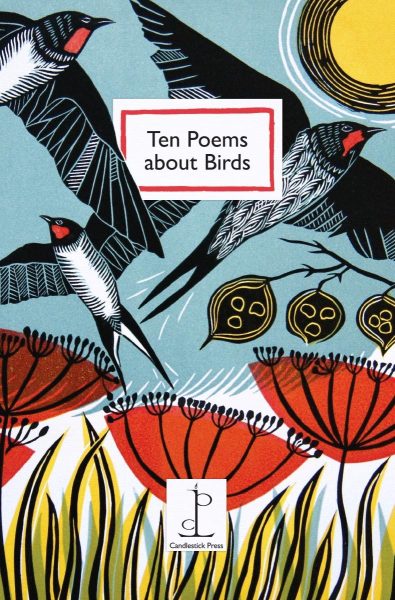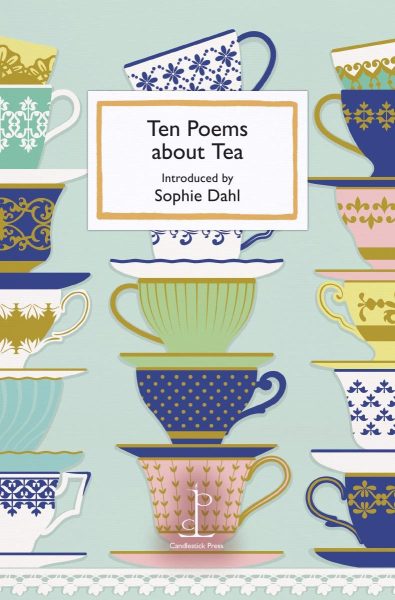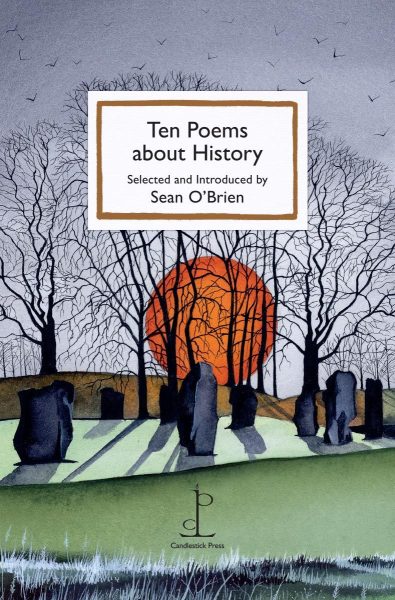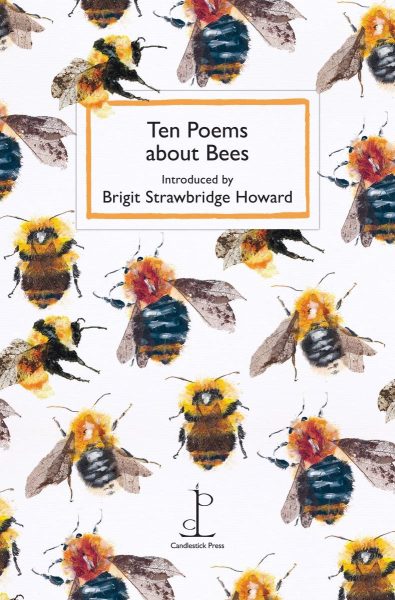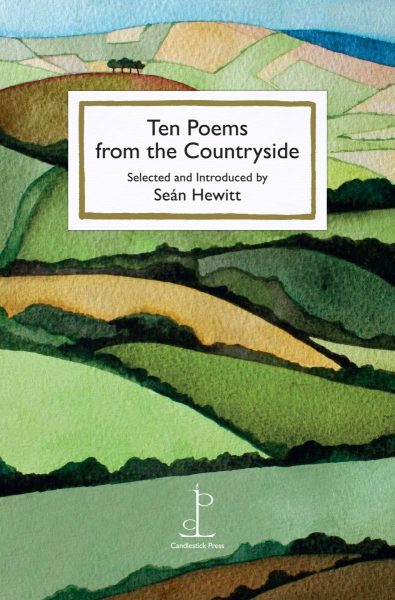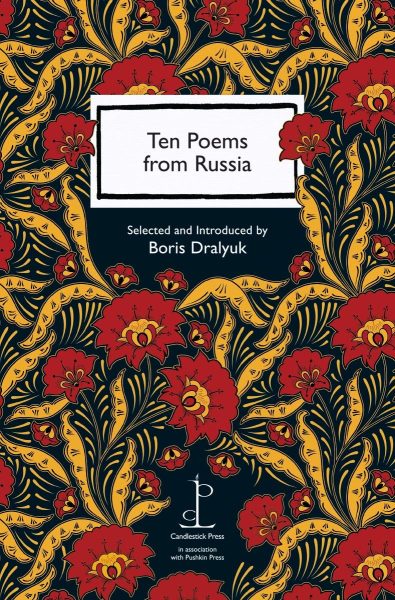The Friday Poem talks to Di Slaney of Candlestick Press about publishing poetry that appeals to non-poets, whether poetry should be able to pay for itself, and the joy of wonky animals
Candlestick Press is a small, independent press publishing beautiful ‘Instead of a card’ poetry pamphlets. Based in Nottingham, they have been making their mini-anthologies since 2008 and have now sold more than 800,000 titles, which means that they have shared more than eight million poems with readers all over the world. They cover a wide range of subjects, from Angels, Baking and Cats to Wales, Walking and War. Pamphlets come with an envelope, a bookmark and an ‘Instead of a card’ sticker to seal the back of the envelope, all in a biodegradable cellophane wrapper. It’s a great idea, and a lovely product. Since 2016 Candlestick Press has been owned by Di Slaney and run by Di and Kathy Towers.
HM: Di, sales of more than 800,000 is pretty impressive. That makes Candlestick quite a player in the poetry world. How does that feel? Do you think more people read poetry because of Candlestick?
DS: I guess I don’t really think of Candlestick in those terms because the poetry world in general operates in a very different way to us. We have a unique business model that gives us much wider coverage, so I tend to see Candlestick as not quite in the fray in that way. I’d like to hope that more people read poetry because of Candlestick – our pamphlets are designed to be signposts to poets’ other work so if you love a poem in one of our titles, you can then go and read more by that poet and become hooked and buy every collection and pamphlet they’ve ever published! It’s important to say that we’re appealing to non-poets as much, if not more than, we are to poets and the existing poetry-reading community. New readers are who we’re primarily aiming for – the people who don’t currently read poetry but who would love it if only they could find a way in.
HM: Poetry for non-poets? I’m all for broadening the appeal of poetry, but don’t you run the risk of stepping into the territory of ‘light verse’ or Hallmark?
DS: Ouch! Well, I hope that anyone who buys our pamphlets quickly realises that they’re nothing like a greetings card – the poems are very carefully curated to have shifts of tone and style and approach with broad appeal, but that doesn’t diminish the quality of the writing. In fact, quite the opposite – if we can mix ‘tough stuff’ that takes more than one read through to appreciate alongside easier reads that may resonate immediately with the heart, then as editors we’ve done a good job. We’ve included poems by around 700 poets within our pages, from the big names of the poetry canon through to lesser known contemporary poets writing some brilliant stuff.
And let’s not forget that as existing writers and readers of poetry, our love of the art form was often inspired by ‘light verse’ or more memorable poems that we were taught at school. The ones that most of us can still remember today, or even quote word for word, like nursery rhymes. I’m not arguing for a dumbing-down of poetry to make sales – that would be crass and also non-viable in the longer term as it would be like eating a cake that’s all icing and no sponge. I’m passionate about making sure that poetry with a capital P has something for everyone within its doors, and that those doors are always open and staffed by someone beckoning to welcome you inside. Gatekeepers in a positive context, I think that’s how I might describe our job at Candlestick.
HM: Kathy Towers has been working with you at Candlestick since 2016 – how do you share the responsibilities? Which of you decides what to commission? And what’s the process once you have decided on a theme and an editor?
DS: Kathy is a fantastic person to work with. We share editorial responsibilities and Kathy takes the lead on events and PR with closer liaison with the poets and guest editors. Pretty much everything is a shared decision, from agreeing which titles to publish and who to approach as guest editors through to choosing the illustrators. When we edit a title in-house, one of us usually takes the lead in choosing the poems and proposing the running order, with the other person as back-up for proofing and acting as a general sounding board. We like quite different poets and poems so when we both like something equally it gets a big tick of approval! We share proofing on every title to make sure very little gets missed. We’re typically working around 18 months in advance on the publication schedule, so we’ll have quarterly review discussions about which title is appearing when and how far along we are in the process from commissioning through to permissions and typesetting.
New readers are who we’re primarily aiming for – the people who don’t currently read poetry but who would love it if only they could find a way in
Outside of the editorial process, the sales and distribution part of the business sits with me, along with all the usual financial management elements. We have a brilliant designer Craig who has worked for Candlestick for over a decade and knows everything about the pamphlets and our website. We have an equally brilliant admin support team in Karen and Sean who work from our logistics office in Nottingham. Kathy and I both work from home and rarely meet up, but that was our working arrangement long before the pandemic so nothing has changed for us in how we get the job done.
HM: Do people pitch ideas for pamphlets to you? (I know it says not to on the site but I don’t imagine that stops everyone). What’s the weirdest thing you’ve ever been pitched?
DS: Yes they do, all the time! Some of the ideas are great and we often end up working with those people so we should probably change the website copy to be a little more welcoming. And the weirdest so far has to be a suggestion for a pamphlet on hair, bones and teeth …
HM: What impact did Covid have on your sales and your profits? Did you have a problem with stock sitting in warehouses? Have sales recovered?
DS: Gosh, I could write a book about the Covid era and its impact on us. We had a multiplicity of problems, starting with our main distributor Central Books not being open during the early stages of the pandemic and us therefore not being able to access larger quantities of stock to keep our own Nottingham distribution office going. Once the initial phase of the pandemic was over and shops started to find ways to trade again, we were able to handle direct orders ourselves for a while but getting access to stock was problematic. At any given time, we have over 100,000 copies of our titles sitting in Central’s warehouse so that’s a lot of stock not to be able to get hold of! Once we thought that little hurdle was behind us, like many others in the industry we were badly hit by wholesaler Bertrams going into liquidation owing us a five-figure sum. Cashflow was already badly hit by the decrease in sales, so this bad debt was a double blow. And then once we’d picked ourselves up from that episode, material supply issues started to impact as paper prices rocketed and the main supplier of our branded paper stock went bust. I felt as if I should be wearing a t-shirt with NOW WHAT?! printed on it that whole time. Some residual issues continue to follow us as our long-term print partner has also just gone into liquidation, so we’ve spent the past couple of months trying to set up a good relationship with another local print supplier. That t-shirt hasn’t yet been consigned to the wardrobe …
But part two of your question about sales is more straightforward to answer. Sales were down by 26% in 2020, up by 23% in 2021 and up again in 2022 by 35%. Despite everything, Candlestick pamphlets have been selling and the business growing, and this is in large part due to the heroic efforts of book and gift shops who found many and varied ways to keep trading. We’re nothing at all without our stockists and are hugely grateful for them keeping us in business and people reading poetry.
HM: Is ten poems as much as most people can tolerate at one time? Why it’s always ten, and not six or 15?
DS: Ah, it’s not just ten! We have eleven (Football), thirteen (Revenge) and fourteen (I Love You). We try to be playful with the formula to suit the theme of the title, although the majority of pamphlets are indeed ten poems – a good number to give a reading arc of different voices, styles and forms but not too many to over-face ‘civilians’ – the people who might love poetry but don’t know that yet.
HM: Candlestick Press must be one of the very few, if not the only, unfunded profit-making poetry enterprises. Do you think poetry should be able to pay for itself? What do you think about poetry publishing that can only survive with substantial public funding?
DS: Hmm, this is an interesting issue. I’ve sat on poetry panels where other editors and publishers haven’t wanted to even mention the idea of profit or the notion that their press is a business, so I know that my commercial background gives me a very different perspective. I love the numbers side of things and find the engine room of the business fascinating and comforting and inspiring. I wouldn’t want to run a business – any business – that couldn’t stand on its own feet by making a profit, so if Candlestick had to rely on funding we wouldn’t be having this conversation as I wouldn’t want to keep it going. But perhaps that’s because I’m not a publisher at heart – I’m a marketing and business person who happened to end up owning and running a poetry press. My view isn’t better than anyone else in the publishing industry, it’s just different, in the same way that Candlestick itself is different to conventional poetry publishers.
I’ve sat on poetry panels where other editors and publishers haven’t wanted to even mention the idea of profit or the notion that their press is a business
I think what makes this market so interesting – and also difficult to understand and predict – is that it’s such a mixed bag of people and ideas and backgrounds. There’s space for all of us and some of the most beautiful books and wonderful new poetry comes from presses who are completely publicly funded, so they’ve got an invaluable part to play, for sure. The debate about poetry paying for itself is complex and can sometimes cause division where division isn’t necessary. I’m always happy to talk to people about how to think of their press in a more commercial context, if they’re interested in doing that.
HM: So what advice would you give to small publishers generally about marketing poetry more effectively? And do you feel that the marketing techniques that you use at Candlestick could be used successfully for marketing single-author poetry collections?
DS: I’m going to answer your second question first and say I’m not sure. With only two exceptions, we haven’t published single author sequences, so I’d have to have a more thorough go at that before I’d be confident enough to give you an answer. Mini-anthologies do a lot of work – they can cover a theme effectively within a few pages, they can present different poets and writing styles, introduce form and encourage the love of a longer poem. Unless a poet is extremely versatile in their range, it’s unlikely that they would be able to provide all those touch points for a novice reader and I think the different touch points are important. It’s not impossible but it would be more of a challenge.
Top tips for small press poetry marketing? Some of these things are obvious and many indies are doing them already, but make sure your cover is beautifully distinctive and spend as much as you can on production quality as it makes a real difference for repeat custom. If you want people other than poets to read your books, then focus less on the hyperbolic blurbs by other poets and try to explain what the book is about instead. Saying that other poets admire the work isn’t enough – if someone is going to spend money on buying the book then they need convincing about what they’ll find inside the pages. More of the jacket copy that you’d find on a best-selling novel than a contender for a big poetry prize! Try to give added value wherever you can – the book can be enhanced in small ways either through the production process (everyone loves coloured end papers or painted edges if you can afford them) or with supporting bits and bobs to make it more of a gift and less of a commoditised purchase. And provide examples or excerpts from poems in the book’s listing on your website – it’s important to offer a flavour of what the book contains.
But perhaps most important of all is your relationship as a publisher with your stockists. We all have different routes to market – some via intermediaries – but if you get the chance to talk to the people who sell your books, they’ll tell you what they need and what you have to do to meet those needs. If you’re not simply selling direct to consumers through your website but via book shops as well, then there’s nothing more valuable than those stockist conversations.
HM: In your experience, what makes a successful pamphlet? Which is your best selling pamphlet? And do you have a personal favourite?
DS: A successful pamphlet has a theme that will connect with a lot of people, a brilliant cover design that will achieve stand-out when displayed in a shop and a good mix of poems that provide the narrative arc that we’re looking for in all our titles. Of those three things, the most important is the cover – sorry, poets! Our perennial best selling pamphlets are Cats, Dogs, Friendship, Walking and Gardens – themes that resonate with a broad spectrum of readers. Cats used to outsell Dogs 2:1 but since the pandemic Dogs have been catching up – a curious thing. I’m not allowed to have favourites – they’re all my children! – but I do have a special fondness for Ten Poems about Journeys, edited by the late John Foggin and containing some really beautiful poems about being on the way to somewhere else. John’s own poem is magical and very poignant in the light of his recent passing.
HM: It sounds as if you could have made a go of pretty much any business, although perhaps the poetry world is unique in that people who find what you call the engine room of a business even vaguely interesting, let alone “fascinating and comforting and inspiring”, are few and far between. What drew you to poetry publishing, and what drew you to poetry in the first place?
DS: I loved poetry at school – like many of us who write, I had a brilliant English teacher who encouraged my reading and inspired an early love of Yeats and Auden. Then as part of my English and European Literature degree at Warwick University in the 1980s, I completed a creative writing option in poetry under the tutelage of Andrew Davies. In my early twenties I carried on writing poems but then stopped when I started running my own marketing business. It wasn’t until I had a couple of operations in 2008 that I started writing again and completed the MA in Creative Writing at Nottingham Trent University, and this was around the time when I first got involved with Candlestick. I never wanted to be a publisher but I was curious to see whether poetry could be commercial, i.e. run as a ‘proper’ business, and the Candlestick delivery mechanism of ‘instead of a card’ pamphlet, envelope, bookmark pack seemed to give a great chance of doing that. I still don’t want to be a publisher – it’s not a vocation for me as it is for many other publishers and editors – but I do want to give Candlestick the best commercial life it can possibly have and I think there’s more scope for growth yet with its unique business model.
I see my job as creating a vehicle to deliver the work of others into the wider world where a poem in one of our pamphlets will be read by thousands of people, not tens or hundreds
HM: You have had a pamphlet, Dad’s Slideshow, published by Stonewood Press in 2015 and your first and second collections Reward for Winter and Herd Queen were published by Valley Press in 2016 and 2020. As a publisher with a background in marketing, how does it feel to be edited, published and marketed by someone else? Is this a tricky relationship to manage? Do you ever feel you might prefer to publish your own poetry? (Have you ever included one of your own poems in a Candlestick pamphlet?)
DS: It’s great to be edited, published and marketed by someone else! I wouldn’t want it any other way and the great folk at Stonewood Press and Valley Press have been wonderful to work with. I would never dream of publishing my own poetry and haven’t included any of my work in a Candlestick pamphlet – I see my job as creating a vehicle to deliver the work of others into the wider world where a poem in one of our pamphlets will be read by thousands of people, not tens or hundreds. With only ten slots in each publication, I would never want to take that opportunity away by including my own work.
HM: As well as all this, you run Manor Farm Charitable Trust, with rare breed and rescued farm animals. As an ex-organic farmer, who used to keep Red Ruby Devon cattle, Wiltshire Horn and Castlemilk Moorit rare breed sheep, this excites me! What have you got?
DS: All kinds of everything is the short answer … donkeys, ponies, goats, sheep, ducks, hens, geese, quails, pigs is the longer one! Around 180 at the last count, I think. Mostly older or disabled animals who have come here for a longterm home and great end of life care after what might have been a more difficult life beforehand.
HM: I have written poems about farming and the animals I worked with, but I still feel that people are rather resistant to poems about pigs and cows and sheep – as if somehow they are not properly ‘poetic’ subjects. Do you share this feeling?
DS: Maybe that was the case in the past but I’m starting to see more poems about livestock out in the world now, and certainly there have been some great workshops recently about writing about all kinds of animals. Maybe we’ve been ahead of the curve! And of course I’m a member of the Wonky Animals Poetry Collective which actively encourages the writing about and thinking about all species and how their wonkiness / vulnerabilities echo our own.

